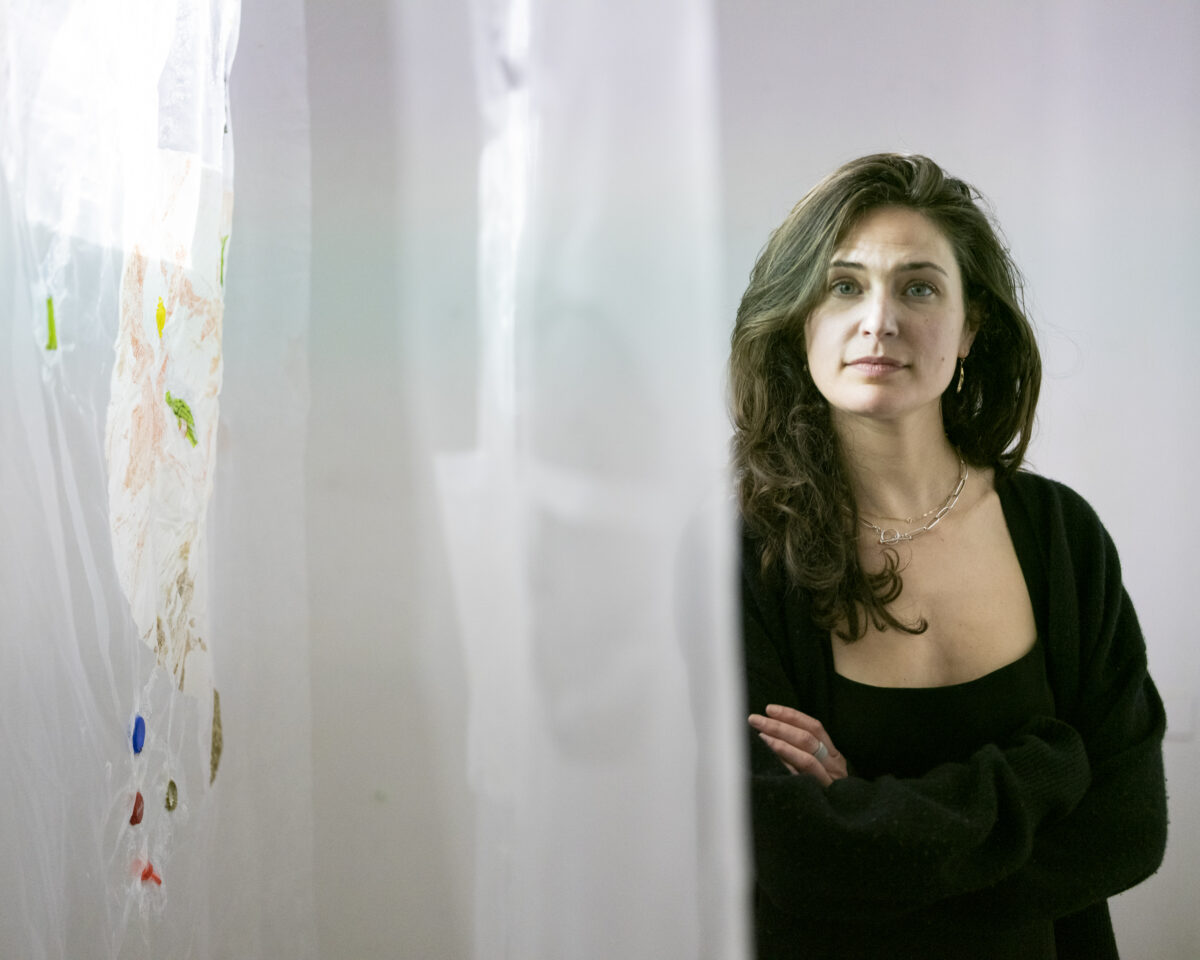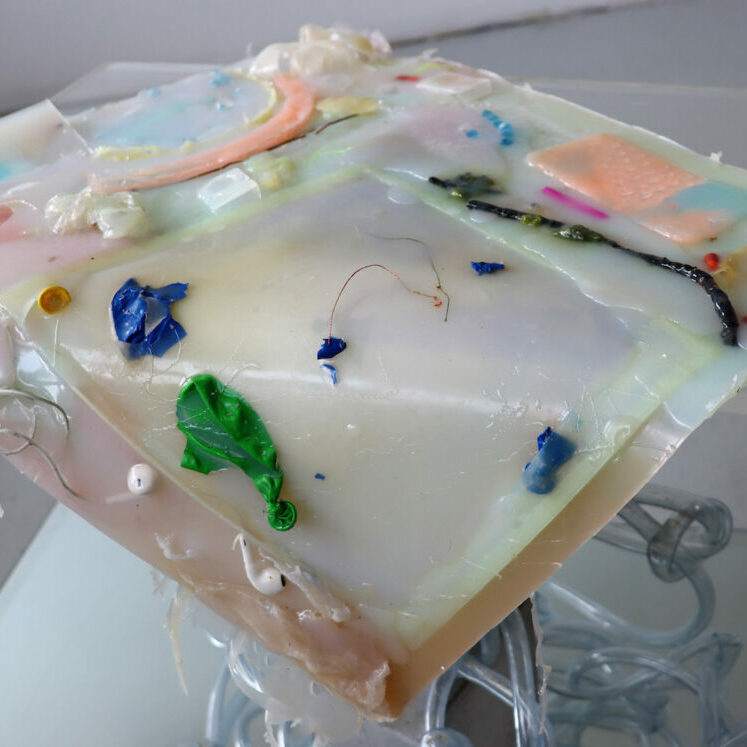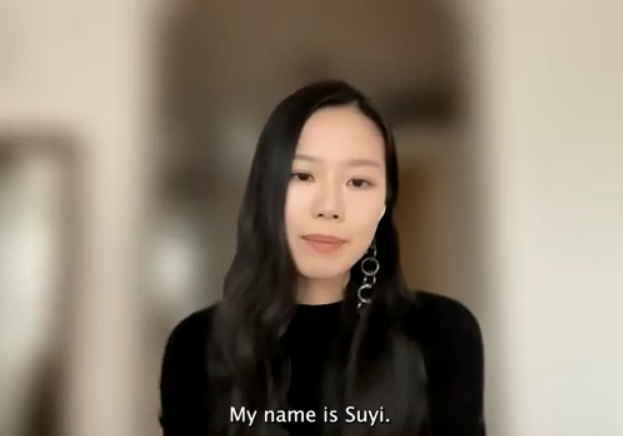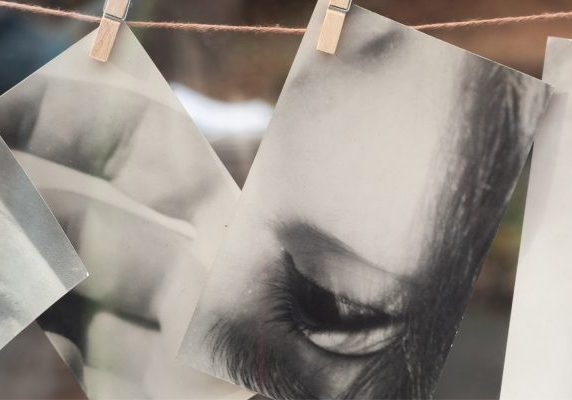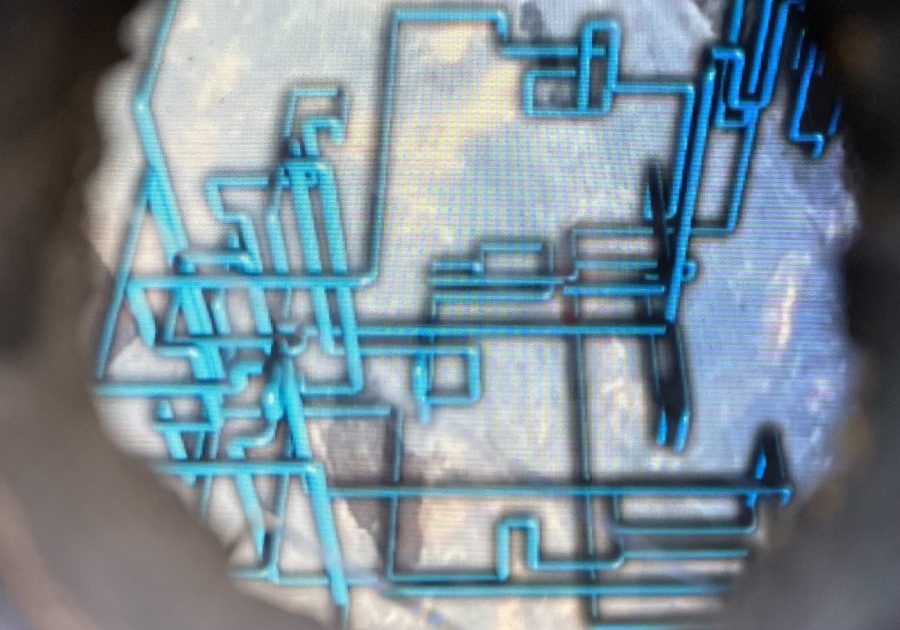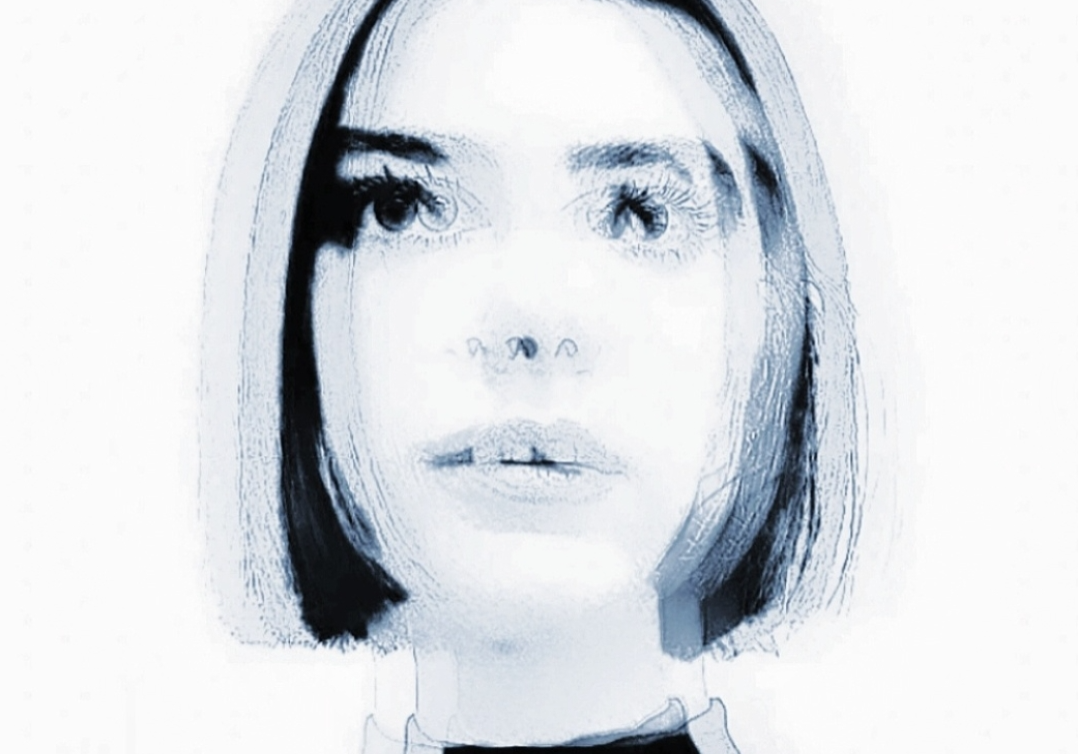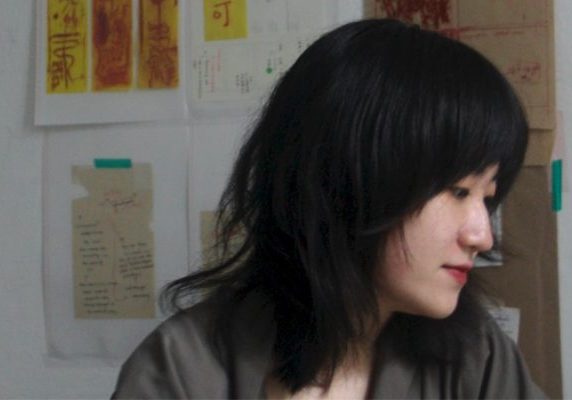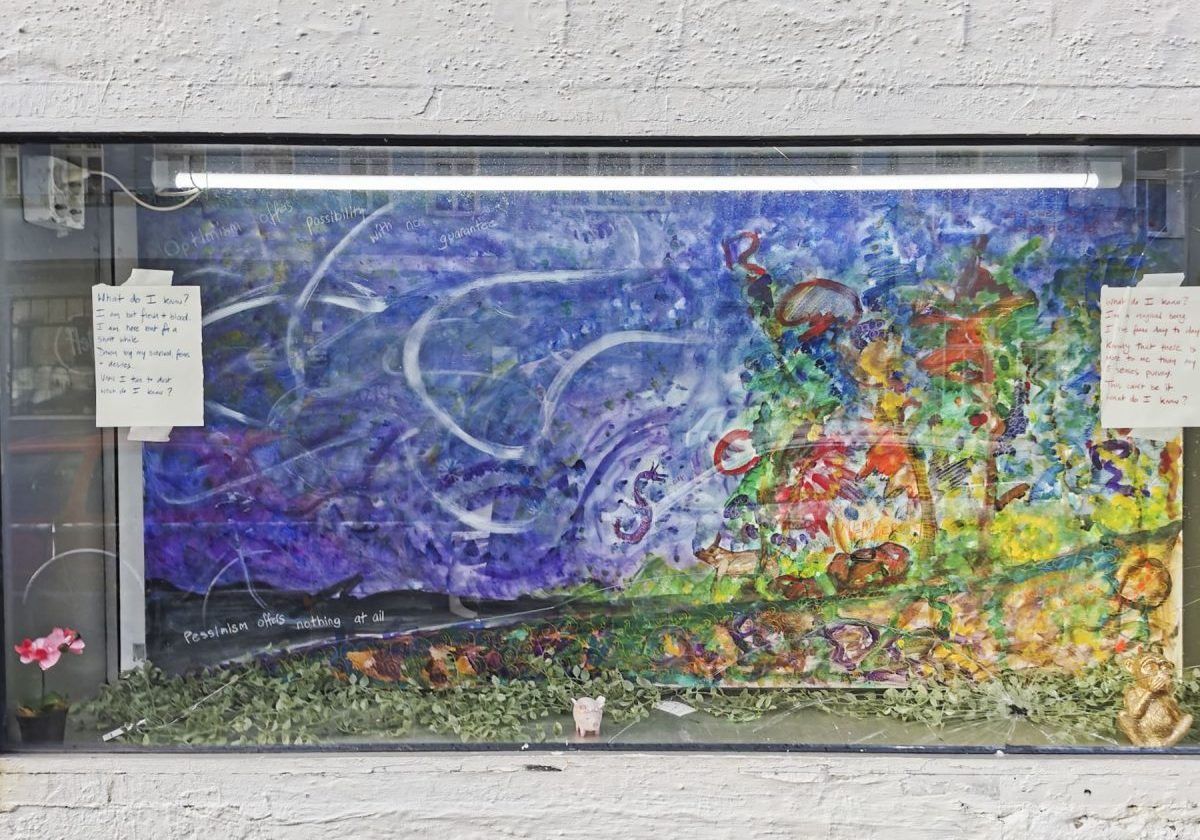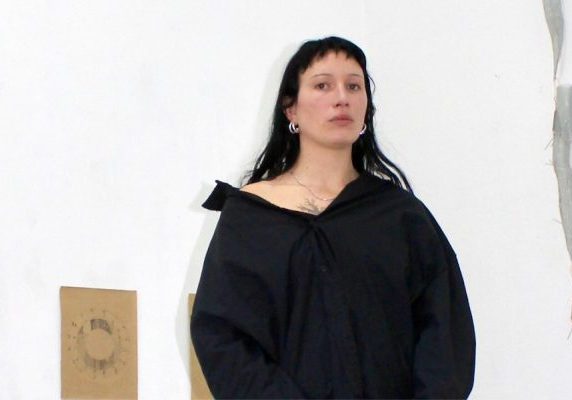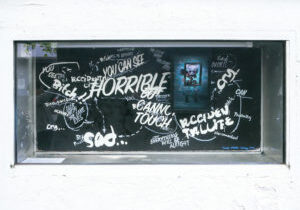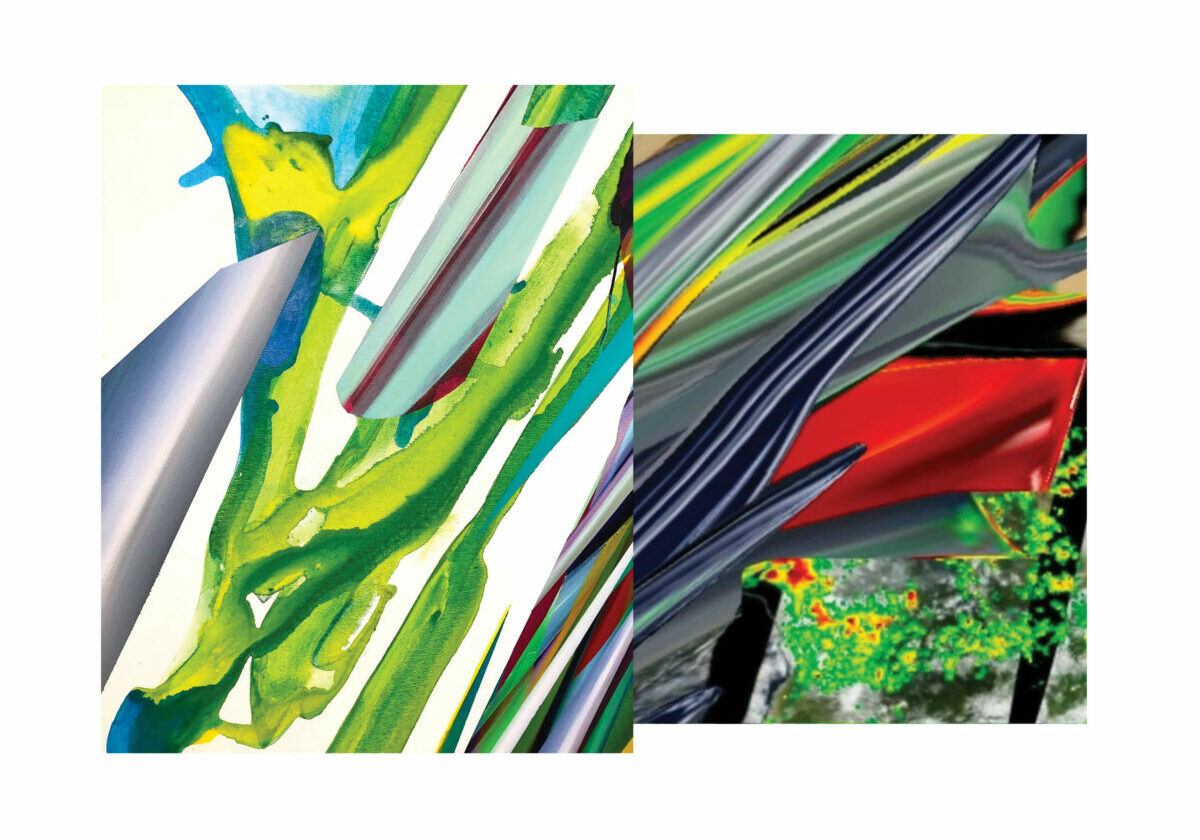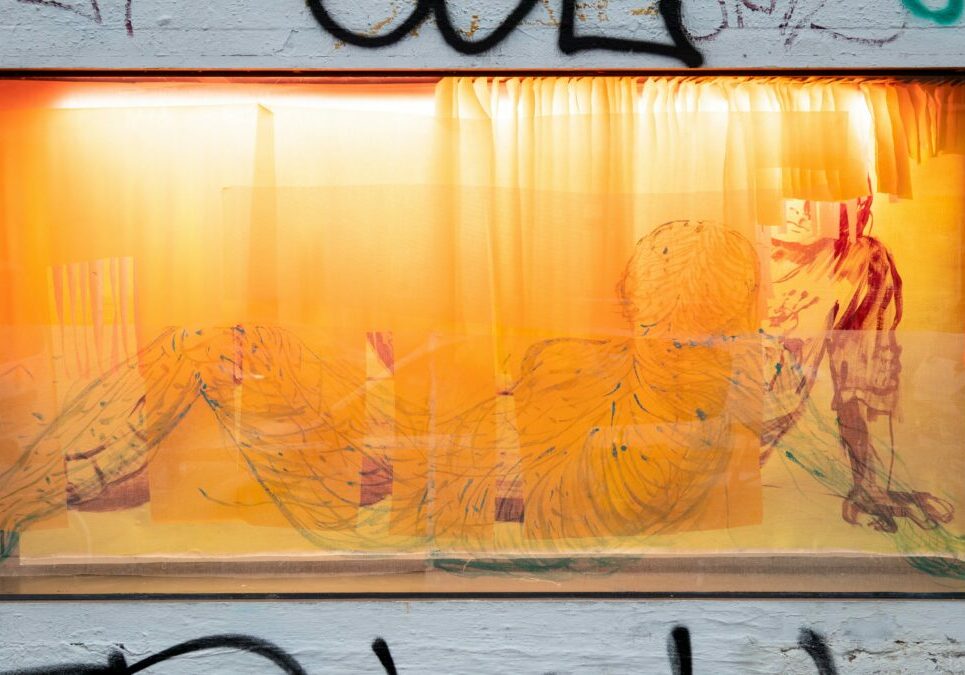Meet the artist // Mollie Burke
Mollie Burke’s work explores the processual impulses of spilling, overflow, and excess in relation to structures of framing, containment and confinement. Through staging events of movement and motion on substrates such as canvas, walls, floors, and space, her work expands abstract painting into a dimensional interrogation of absence and fragmentation. By referencing and mixing histories of expressionist and hard edged painting with the poetics of light and space, her work provides a mapping of embodied affect along with entangled modes of perceiving.
What’s your name and where you come from?
My name is Mollie Burke, I am from the West Coast of Canada. I live in Vancouver, on unceded Coast Salish land.
How did your artist journey begin?
I think that journey basically describes my whole life – I was always drawing and painting from a very early age. I started studying art history and cultural theory as a way to work as a curator, but then enrolled in a studio art program afterwards. I think of my commitment to being an artist as a conscious choice I make every day, and as a way to engage and think critically about what’s around me.
Do you find inspiration in real-life situations and moments you experienced?
Absolutely – art does not exist in a vacuum. For me my work is a way of elaborating upon my encounters with the world – that each small moment could be a fragment, an indication, or a symptom of much larger systemic or cultural processes. And these processes are the things that inform and shape our perception and social reality.
What is your process? What are your overarching themes in your artwork?
My central theme is that of paradox. I call it dissonance, because that term places it in a psychological and emotional framework instead of an abstract one. I think the experience of contradiction, call it dissonance or paradox, is a really interesting emotional state that we all occupy today, navigating late stage capitalism, climate collapse, consumerism, the global division of labour, etc. I personally am navigating binary structures constantly, to try and orient or place myself in global and local contexts. An example, and what I’ve been making work about while at GlogauAIR, is the contradictions that are set up in the idea of consumption. I have to negotiate my need to consume things – food, clothing, water, heat – with the knowledge that my need is creating waste that impacts people’s lives across the globe. It’s a way that my own body is, in a way, extended into space and time – I eat a chocolate bar, the wrapper ends up in the pacific ocean, and the chocolate came from a corporation with ties to colonial histories, and on and on it goes. Of course, what’s revealed in this thinking is that it can’t be up to us as individuals to navigate this – it’s a systemic thing. But I think these systems and policies inform our imaginations, and our conceptions of ourselves.
I work sculpturally in order to explore these tensions; With materials that reference the actual lived reality of my different “case studies” in dissonance. In Berlin, I have been collecting detritus from around the streets, and embedding them in fabrics that are used in clothing. The familiarity of the materials and the way they exist in public and private spaces in our lives is important in how I want to reconfigure the symbolic elements in them. I want to negotiate relationships to desire and impulse in relation to these objects, by breaking down their elements and rebuilding them in ways that render their operations new or strange. As another example, I work with glass as a reference to the materiality of screens in order to describe the effects and impacts of interfaces without all the loaded preconceived ideas around screens as objects. So, I describe and reference objects that contain systemic complexities within them. I use them as sites to pull out the dissonance and contradiction within them. I want my work first and foremost to operate perceptually, shifting our relationships to the material world around us.
Do you think your art has evolved being in a different environment E.g. Do you think GlogauAIR / being in Berlin has influenced your work?
I was able to participate with and take in so much diverse artwork in Berlin, which of course informs my approach and practice. It’s all a big conversation. In addition to seeing all the impressive institutions here, living with such a great group of artists and people informed my work in a deep way. The conversations I have with friends, the debates and experiences, all play a big role in the way I approach or think about topics. While I work in the studio solo, I consider my work to be grounded in a very social and collaborative place. Having the time and space at GlogauAIR, and literally living inside of my installation, made me feel very close to what I was doing and making. I am excited for the work I make in the next year, following this special time of thinking, making, and experiencing.
